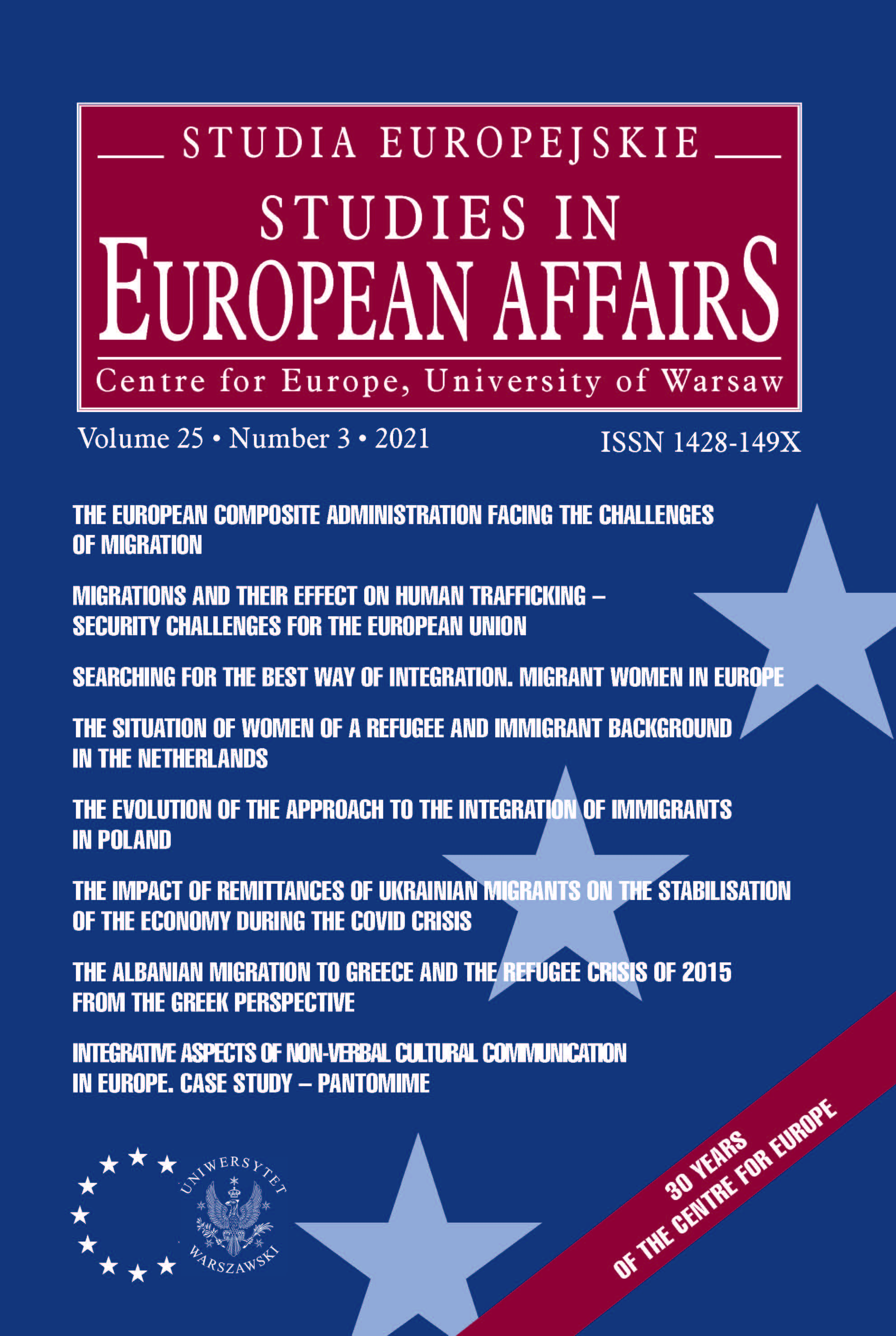Integrative Aspects of Non-verbal Cultural Communication in Europe
Integrative Aspects of Non-verbal Cultural Communication in Europe
Case Study – Pantomime
Author(s): Mirella KurkowskaSubject(s): Fine Arts / Performing Arts
Published by: Centrum Europejskie Uniwersytetu Warszawskiego
Keywords: Non-verbal Communication; Cultural Communication; Pantomime; Mime Festivals; Street Art Festivals; Intercultural Communication; Europe;
Summary/Abstract: This article touches on the integrative aspects of non-verbal cultural communication as exemplified by diverse pantomime genres in modern Europe. The starting point being the characteristic features of this form of art, as well as its genesis and functions in the Eastern and Western parts of the globe. Festivals, which have been rapidly developing in the world of pantomime and street art since the beginning of the 1970s, play an exceptional role in European cultural exchange. They are, however, generally ephemeral projects, often placed besides institutionalised mainstream culture, with no aspirations to become part of the EFA for example. Nonverbal cultural communication in Europe is still poorly integrated and yet maintains a remarkable diversity of genres and multi-colour forms. Such decentralisation is also the source of its strength manifested by its ease in reaching an incredibly diverse audience, the ability to obtain feedback from mass audiences, its expansiveness (taking up various spaces), its flexible approach in its quest for answers – but at the same time respecting the rudiments of the rich, native European tradition of popular culture. It seems that EU institutions nowadays notice the significant role of this type of intercultural communication, as evidenced by, for example, the Commissioner Gabriel’s statement regarding a meeting with EFA representatives on 22nd June 2021. The European Union has no harmonisation competences in the area of culture, but rather solely complementary and supporting functions with regards to Member States’ activities – one can count on EU sectoral support funds from the Creative Europe Programme. The subsidisation of festival, confrontation, and meeting movements related to non-verbal cultural exchange can take place (and does take place) through regions, local governments, or cultural institutions.
Journal: Studia Europejskie
- Issue Year: 25/2021
- Issue No: 3
- Page Range: 137-155
- Page Count: 19
- Language: English

